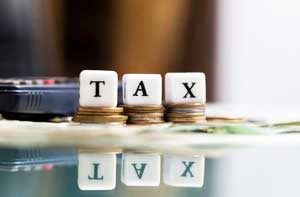The government on Saturday explained how the tax reforms, proposed under the new income tax slabs, will benefit the middle class and ease the tax burden for them.
Here are some of the FAQs and their answers, as shared by the government, which aim to clear the doubts in the minds of taxpayers.
Q.1. What is the ‘New Regime’?
Ans. The new regime provides for concessional tax rates and liberal slabs. However, no deductions are allowed in the new regime (other than those specified for example: 80JJAA, 80M, standard deduction).
Q.2. What are the tax slabs in the earlier new regime?
Ans. The Finance (No.2) Act, 2024 had the following slabs in the new tax regime for a person, being an individual or Hindu undivided family or association of persons (other than a cooperative society), or body of individuals, whether incorporated or not, or an artificial juridical person referred to in sub-clause (vii) of clause (31) of section 2.
For total income up to Rs 3,00,000, the rate of tax is nil; for those from Rs 3,00,001 to Rs 7,00,000, the tax rate is 5 per cent. For people with income from Rs 7,00,001 to Rs 10,00,000, the tax rate is 10 per cent.
For those with income between Rs 10,00,001 to Rs 12,00,000 the tax rate is 15 per cent and for people with income from Rs 12,00,001 to Rs 15,00,000, it is 20 per cent. For those who have income above Rs 15,00,000, the tax rate is 30 per cent.
Q3. What are the new slabs in the proposed new regime introduced by Finance Bill, 2025?
Ans. The new slabs proposed are: for people with total income between Rs 0-4 lakh, the rate of tax will be zero per cent; for those between Rs 4-8 lakh, the tax rate will be 5 per cent; for people between Rs 8-12 lakh, the tax rate will be 10 per cent.
For people with income between Rs 12-16 lakh, the tax rate will be 15 per cent; for those between Rs 16-20 lakh, the tax rate will be 20 per cent; and for those between Rs 20-24 lakh, the tax rate will be 25 per cent. For people with income above Rs 24 lakh, the tax will be 30 per cent.
Q.4. What is the maximum total income for which tax liability for individual taxpayers is nil?
Ans. In the proposed new tax regime, the maximum total income for which tax liability for individual taxpayers is nil is Rs 12 lakh.
Q.5. To claim the benefit of nil tax liability, what are the steps required to be taken?
Ans. The benefit of such nil tax liability mentioned above is available only in the new tax regime. This New tax regime is the default regime. To avail of the benefit of rebate allowable under proposed provisions of the new tax regime, only a return is to be filed otherwise, no other step is required to be taken.
Q.6. The change in tax slabs is beneficial for which category of persons?
Ans. The new tax regime applies to a person, being an individual or Hindu undivided family or association of persons [other than a co-operative society], or body of individuals, whether incorporated or not, or an artificial juridical person referred to in sub-clause (vii) of clause (31) of section 2. Accordingly, a change in tax slabs will benefit all these persons.
Q.7. How will a person who has an income of Rs 12 lakh benefit from new rates?
Ans. Any individual earlier was required to pay a tax of Rs 80,000 (in the new regime) for an income of Rs 12 lakh. Now he will be required to pay nil tax on such income.
Q. Whether the limit of total income for nil tax payments has increased in this budget?
Ans. Yes, the limit of total income for nil tax payments in the new tax regime has been increased to Rs 12 lakh in this budget provided the taxpayer files ITR to avail the rebate.
Q9. What was the earlier limit of income for nil tax payments?
Ans. Earlier the limit of income for nil tax payment was Rs 7 lakh. By increasing this limit to Rs 12 lakh around one crore assesses who were earlier required to pay tax varying from Rs 20,000 to Rs 80,000 will be now paying nil tax.
Q.10. Is the standard deduction on salary available in the new regime?
Ans. Yes, a standard deduction of Rs. 75,000 is available to a taxpayer in the new regime. Therefore, a salaried taxpayer will not be required to pay any tax where his income before the standard deduction is less than or equal to Rs 12,75,000.
Q.11. Whether a standard deduction is available in the old regime?
Ans. A standard deduction of Rs 50,000 is available in the old regime.
Q.12. How many taxpayers will benefit from the new rates and slabs?
Ans. Presently, for AY 2024-25, about 8.75 crore persons have filed their ITRs. All such assesses who were paying tax in the new tax regime will benefit from the change in rates and slabs.
Q.1. What is the extra amount available to the taxpayers as a result of this change?
Ans. Approximately Rs 1 lakh crore will be made available in the hands of the taxpayers by virtue of changes in slab, rates, and rebate.
Q.14. How is the marginal relief available to individuals?
Ans. In the new regime under section 115BAC(1A), marginal relief is available to only resident individuals who have income marginally above Rs 12 lakh. For example, for a person having an income of Rs 12,10,000, in the absence of marginal relief, the tax, works out to be Rs 61,500 (5 per cent of Rs 4 lakh+10 per cent of Rs 4 lakh, and 15 per cent of Rs 10,000).
However, due to marginal relief, the amount of tax to be actually paid is Rs 10,000.
Q.15. How much tax will be paid by a taxpayer having an income of Rs 12,10,000? What is marginal relief?
Ans. The tax liability on such taxpayers by way of slabs only is Rs 61,500. However, a person having Rs 12 lakh income pays nil tax. By providing marginal relief it has been ensured that the tax payable by a person having income marginally above Rs 12 lakh is required to pay only a marginal amount of tax equal to the amount of income above Rs 12 lakh so that his carry home is also Rs 12 lakh. In this case, he will be required to pay a tax of Rs 10,000.
Q.16. What is the maximum amount of rebate available to any taxpayer?
Ans. The maximum rebate available is Rs 60,000 which is there for a taxpayer having income of Rs 12 lakh on which tax is payable as per the new slabs.
Q. 17. What is the total income till which marginal relief is admissible?
Ans. The total income till which marginal relief is available is near about Rs 12,75,000.
Q.18. Whether special income having special rates such as capital gains, lottery, etc. also eligible for rebate?
Ans. No rebate is available on income from capital gains or lotteries or any other income on which a special rate has been provided in the Act. It is available only on the tax payable as per slabs under section 115BAC.
Q.19. What is the difference between rebate and marginal relief?
Ans: Rebate is the deduction from tax that is available to taxpayers having income up to Rs 12 lakh in the new regime. Marginal relief ensures that taxpayers having income marginally higher than Rs 12 lakh do not pay tax more than the income in excess of Rs 12 lakh.




New Urban Community Health Centre to reduce patients rush in GBP Hospital: CM Dr Manik Saha
Chief Minister Dr Manik Saha on Thursday laid foundation stone of 50-bed Urban Community Health Center here at Agartala and said that the present government is working diligently to improve health infrastructure and services in the state.
Govt determined to develop sports infrastructure in Tripura: CM Dr Manik Saha
Chief Minister Dr Manik Saha on Thursday inaugurated football turf, athletics track and hockey ground here at Agartala Dasarath Deb Sports Complex at Badharghat and said that the government is determined to develop facilities and platform for sports persons in the state.
Mistake that benefits no one: World leaders react to Trump's 'reciprocal tariffs'
As US President Donald Trump signed an executive order on the so-called "reciprocal tariffs," the world reacted sharply against the decision, with some calling it a "mistake that benefits no one" while others called it a violation of Washington's obligations under the World Trade Organization (WTO).
Indian pharmaceutical exports get reprieve from Trump’s reciprocal tariffs
Because of the importance of India’s pharmaceuticals to US healthcare, those exports will get a reprieve from President Donald Trump’s reciprocal tariffs, according to the White House.
India stands less impacted by Trump tariffs than global peers: Industry
As US President Donald Trump announced reciprocal tariffs on dozens of countries, including India, industry experts said on Thursday that it appears India's export competitiveness to the US market stands far less impacted on a relative basis compared to global peers.
IAF pilot killed, another critical as Jaguar fighter jet crashes in Gujarat
An Indian Air Force (IAF) pilot lost his life, while another sustained critical injuries after their two-seater Jaguar fighter jet crashed near Gujarat's Jamnagar Airfield, the IAF confirmed on Thursday.
PM Modi emplanes for Thailand; to attend BIMSTEC summit
Prime Minister Narendra Modi on Thursday emplaned for Thailand on a state visit to attend the 6th BIMSTEC Summit, with his visit also set to bolster bilateral relations between New Delhi and Bangkok.
Bhavan’s Little Learners celebrate annual programme
The Bhavan’s Little Learners, Bordowali celebrated annual programme and organised prize distribution ceremony here at Agartala Rabindra Satabarshiki Bhavan on Wednesday.